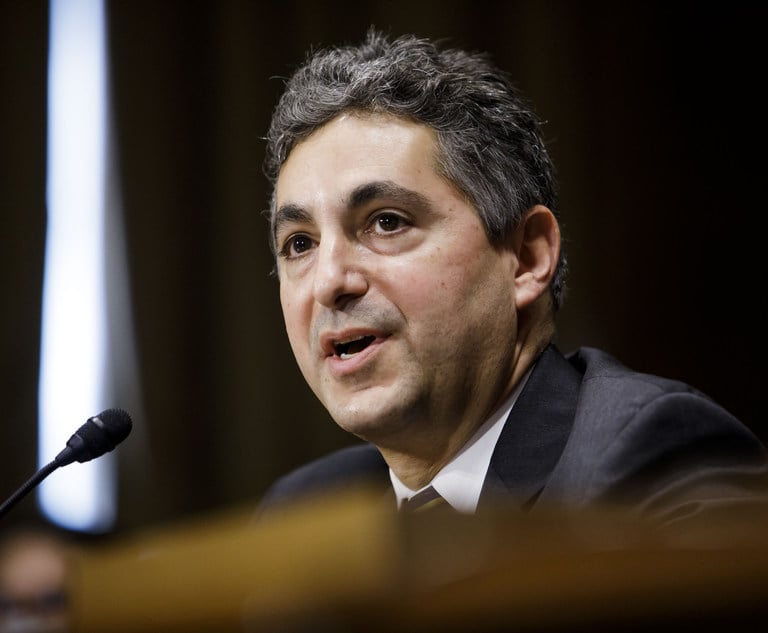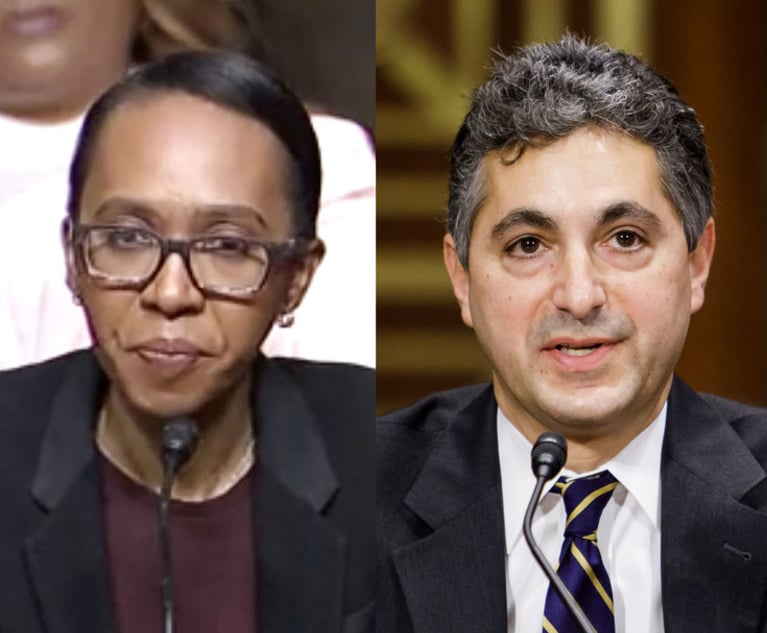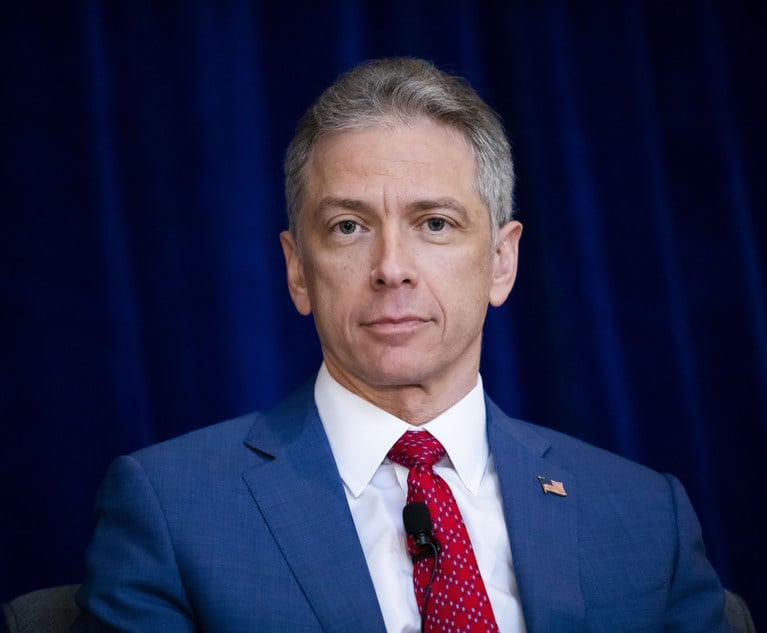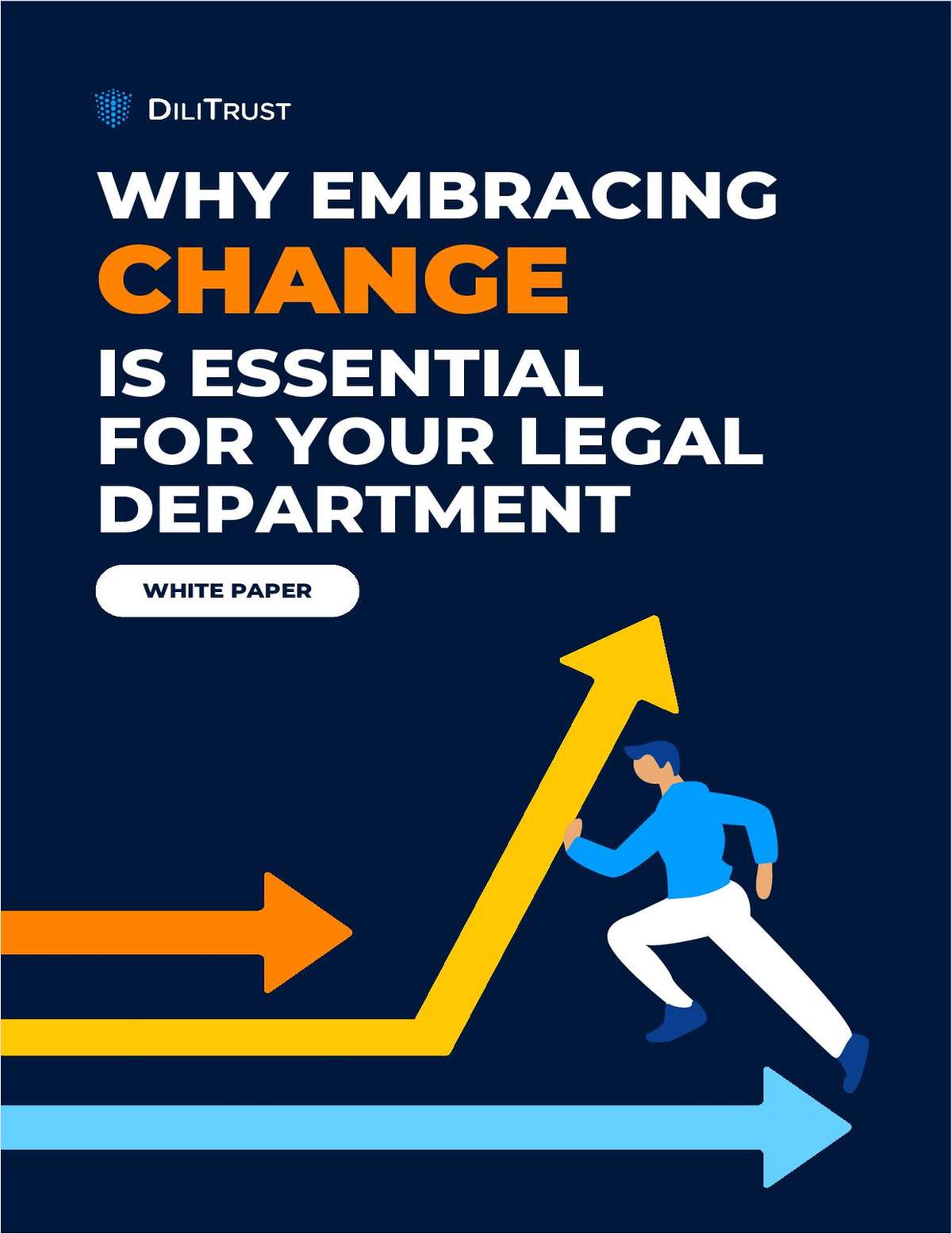Skilled in the Art: Viasat Trade Secrets Case Is All About Optics + Federal Circuit Says Alsup Must Abide 'Litigation Gimmick'
Ten years ago two networking companies embarked on a collaboration so ambitious it was dubbed “Project Everest.” Next week they'll square off in a California state courtroom over allegations of broken contracts and trade secret violations.
May 31, 2019 at 03:57 PM
8 minute read
Welcome to Skilled in the Art. I'm Law.com IP reporter Scott Graham. Ten years ago two networking companies embarked on a collaboration so ambitious it was dubbed “Project Everest.” Next week they'll square off in a California state courtroom over allegations of broken contracts and trade secret violations. Acacia Communications' chief legal officer assured Viasat that it had engineered disputed products on its own, but Viasat contends that internal company emails suggest otherwise. Meanwhile, it's been a good week for NPEs at the Federal Circuit, and one of the biggest looks to keep that momentum going on Monday. As always, please feel free to email me your thoughts and follow me on Twitter.
 Courtesy photo.
Courtesy photo.Viasat Trade Secrets Case Is All About Optics
Viasat is a familiar name in IP circles. The Carlsbad, California-based networking company won a $283 million jury verdict for patent infringement and breach of contract against Space Systems/Loral, now rebranded as SSL, in 2014, eventually settling the dispute for $100 million.
Now Viasat is gunning for another nine-figure verdict in a trade secret trial scheduled to open next week in San Diego County Superior Court. This time the target is Maynard, Massachusetts-based Acacia Communications, a publicly traded manufacturer of optical interconnect products.
Ten years ago, when it was in startup mode, Acacia hired Viasat to help design the chips used in Acacia's 100-gigabit-per-second fiber optic modems. Under the parties' license agreement, Viasat provided confidential coding structure for, among other things, soft decision forward error correction (SDFEC), a method of encoding and decoding packet data to ensure against corrupted transmissions. Acacia dubbed the collaboration “Project Everest.”
All went fine for awhile with Acacia maturing into a public company and paying royalties along the way. But Viasat grew unhappy by 2015, after Acacia began rolling out next generation products without paying royalties on them. Acacia executives including Chief Legal Officer Janene Asgeirsson told Viasat it had engineered the new products on its own, without using Viasat's SFDEC or “any variant or derivative thereof.”
Viasat, which is represented by Fitzgerald Knaier and Warren Lex, argues that Acacia could not have made its new products backward-compatible without using portions of Viasat's code. It also points to internal emails produced in discovery, such as one from an Acacia software engineer to a lead designer that says, “I've removed the Deinterleaver, which has its own spec. The rest is copied from the Everest spec.”
Acacia, which is represented by Wolf, Greenfield & Sacks and Procopio, Cory, Hargreaves & Savitch, says it has debunked Viasat's copying theory, and that Viasat is reading the license agreement too broadly. “Viasat should have dropped its case when it realized that Acacia independently developed the Accused Products,” Acacia argues in a court filing. It's also counterclaiming for breach of contract, accusing Viasat of improperly incorporating material from their collaboration in its own patent applications.
According to a filing last month from Acacia, Viasat is demanding “hundreds of millions” in unjust enrichment damages, a figure Acacia calls “orders of magnitude larger than its own contemporaneous valuation of its technology at the time of the Agreement.”
 Judge William Alsup. (Photo: Jason Doiy/ALM)
Judge William Alsup. (Photo: Jason Doiy/ALM)Federal Circuit Hands a Couple of Wins to NPEs
It was the Federal Circuit's version of man-bites-dog. Last week the appellate court ruled that the Eastern District of Texas had been too hard on NPE giant Uniloc, and reversed two of four decisions from Judge Robert Schroeder III that had found Uniloc patent claims ineligible under Section 101.
On Thursday the Federal Circuit handed NPEs another win, this time ruling that an assignee who doesn't hold all of the substantive rights in an asserted patent must be given an opportunity to join the owner to the case before getting kicked out of court. U.S. District Judge William Alsup had dismissed In re Lone Star Silicon Innovations after accusing assignee Lone Star of arranging “a litigation gimmick” with Advanced Micro Devices.
AMD is the original owner of a handful of semiconductor design patents at issue. AMD purported to transfer “all right, title and interest” in the patents to Lone Star, a subsidiary of Texas' Longhorn IP, but imposed several conditions. Lone Star could assert the patents only against unlicensed third parties specifically listed in the agreement. It could not assign the patents to others. And AMD would share in any revenue Lone Star could generate.
Lone Star then sued several chip companies in the Eastern District of Texas in 2016. Nanya Technology, United Microelectronics and other defendants got the cases transferred to the Northern District of California, where Alsup slammed the transfer agreement.
“The essence of this problem is that the patent owner tried to find a way to shield itself from counterclaims while retaining a way to reap the monetary benefits of suing competitors and others for infringement of its patents,” Alsup wrote.
That “neat trick” left Lone Star without standing to sue. Alsup ruled the company would have to refile its suits while including AMD as a plaintiff, which would shorten their damages period. Lone Star instead proposed joining AMD so it could keep its original filing dates, but Alsup said that would unfairly reward the two companies for their gimmick.
Nanya even moved for fees, saying that if Lone Star had produced the transfer agreement in a timely manner while in Texas, Nanya could have avoided the expense of moving to transfer.
On Thursday, the Federal Circuit agreed with Alsup that Lone Star doesn't have statutory standing to sue under Section 281. But, in part due to a recent shift in Supreme Court law, the court found Lone Star does possess Article III standing. “The district court therefore should have considered whether AMD's joinder was feasible,” O'Malley wrote. “If so, then AMD must be joined—involuntarily if need be.”
Fitch, Even, Tabin & Flannery partner Timothy Maloney argued the appeal for Lone Star Silicon Innovations. Nixon Peabody partner Peter Wied argued for United Microelectronics and Nanya.
Villanova law professor Michael Risch said dismissals for improper standing are common in his studies of NPE litigation. “Parties get busy, aren't careful, or otherwise just do not get the paperwork done in time and/or correctly,” he said.
How much impact the Federal Circuit's decision will have is an open question. “In most of the cases I've seen, the prior owner doesn't want to get involved, and that's the problem,” he said. “Otherwise, they would have been joined in the first place.”
The effect is being felt in at least one other case. Within hours of Thursday's decision, Uniloc cited it as supplemental authority in its patent battle with Apple in the Northern District of California. The parties have been fighting over standing and ownership there too. And the judge presiding over that case? U.S. District Judge William Alsup.
|
Who's Arguing?
Capital One's novel antitrust case against Intellectual Ventures was the buzz of the Silicon Valley patent bar a couple of years ago, but the bank's loss on summary judgment combined with IV's less aggressive acquisitions has cooled the chatter. Intellectual Ventures v. Capital One will be back on the front burner Monday when it lands before the Federal Circuit. IV comes in fresh off a $43 million win jury verdict against Ericsson and T-Mobile in March. DOJ antitrust chief Makan Delrahim had been scheduled to make an amicus appearance, but will yield to one of his colleagues.
The five-year-old case began with Intellectual Ventures suing a bevy of banks for patent infringement. Capital One counterclaimed, accusing IV of aggregating thousands of poor-quality patents that read on financial services and then threatening “endless litigation” if its license demands—according to Capital One, an opening bid of $131 million for a five-year global license—weren't met. U.S. District Judge Paul Grimm ruled that while it's “hard to deny that there is something concerning from an antitrust perspective,” that IV's suit was immunized from attack by the Noerr-Penningtondoctrine.
Latham & Watkins partner Matt Moore will argue for Capital One that IV's acquisition strategy alone, which he says leaves banks no options for designing around or licensing alternative technology from others, is anticompetitive and not protected by Noerr-Pennington.
Bob Freitas of Freitas & Weinberg argues that Capital One's case is “a fantasy”—that IV holds only a tiny fraction of the patents in the relevant class, and that in any event a would-be monopolist would have nothing to gain from amassing patents without any plan for asserting them. He also argues the number IV presented was not a licensing demand, and that other banks engaged in extended negotiations with IV while Capital One snubbed them.
The Justice Department filed an amicus brief agreeing with Capital One that Noerr-Pennington does not protect anticompetitive patent acquisitions from antitrust liability, without expressing further views about the case. Deputy Assistant Attorney General Michael Murray subbed in for Delrahim on Wednesday and will present the DOJ's amicus argument.
That's all from Skilled in the Art this week. I'll see you all again on Tuesday.
This content has been archived. It is available through our partners, LexisNexis® and Bloomberg Law.
To view this content, please continue to their sites.
Not a Lexis Subscriber?
Subscribe Now
Not a Bloomberg Law Subscriber?
Subscribe Now
NOT FOR REPRINT
© 2024 ALM Global, LLC, All Rights Reserved. Request academic re-use from www.copyright.com. All other uses, submit a request to [email protected]. For more information visit Asset & Logo Licensing.
You Might Like
View All
Skilled in the Art With Scott Graham: I'm So Glad We Had This Time Together

Design Patent Appeal Splinters Federal Circuit Panel + Susman Scores $163M Jury Verdict + Finnegan Protects Under Armour's House
Trending Stories
- 1For Safer Traffic Stops, Replace Paper Documents With ‘Contactless’ Tech
- 2As Second Trump Administration Approaches, Businesses Brace for Sweeping Changes to Immigration Policy
- 3General Warrants and ESI
- 4GC Pleads Guilty to Embezzling $7.4 Million From 3 Banks
- 5Authenticating Electronic Signatures
Who Got The Work
Michael G. Bongiorno, Andrew Scott Dulberg and Elizabeth E. Driscoll from Wilmer Cutler Pickering Hale and Dorr have stepped in to represent Symbotic Inc., an A.I.-enabled technology platform that focuses on increasing supply chain efficiency, and other defendants in a pending shareholder derivative lawsuit. The case, filed Oct. 2 in Massachusetts District Court by the Brown Law Firm on behalf of Stephen Austen, accuses certain officers and directors of misleading investors in regard to Symbotic's potential for margin growth by failing to disclose that the company was not equipped to timely deploy its systems or manage expenses through project delays. The case, assigned to U.S. District Judge Nathaniel M. Gorton, is 1:24-cv-12522, Austen v. Cohen et al.
Who Got The Work
Edmund Polubinski and Marie Killmond of Davis Polk & Wardwell have entered appearances for data platform software development company MongoDB and other defendants in a pending shareholder derivative lawsuit. The action, filed Oct. 7 in New York Southern District Court by the Brown Law Firm, accuses the company's directors and/or officers of falsely expressing confidence in the company’s restructuring of its sales incentive plan and downplaying the severity of decreases in its upfront commitments. The case is 1:24-cv-07594, Roy v. Ittycheria et al.
Who Got The Work
Amy O. Bruchs and Kurt F. Ellison of Michael Best & Friedrich have entered appearances for Epic Systems Corp. in a pending employment discrimination lawsuit. The suit was filed Sept. 7 in Wisconsin Western District Court by Levine Eisberner LLC and Siri & Glimstad on behalf of a project manager who claims that he was wrongfully terminated after applying for a religious exemption to the defendant's COVID-19 vaccine mandate. The case, assigned to U.S. Magistrate Judge Anita Marie Boor, is 3:24-cv-00630, Secker, Nathan v. Epic Systems Corporation.
Who Got The Work
David X. Sullivan, Thomas J. Finn and Gregory A. Hall from McCarter & English have entered appearances for Sunrun Installation Services in a pending civil rights lawsuit. The complaint was filed Sept. 4 in Connecticut District Court by attorney Robert M. Berke on behalf of former employee George Edward Steins, who was arrested and charged with employing an unregistered home improvement salesperson. The complaint alleges that had Sunrun informed the Connecticut Department of Consumer Protection that the plaintiff's employment had ended in 2017 and that he no longer held Sunrun's home improvement contractor license, he would not have been hit with charges, which were dismissed in May 2024. The case, assigned to U.S. District Judge Jeffrey A. Meyer, is 3:24-cv-01423, Steins v. Sunrun, Inc. et al.
Who Got The Work
Greenberg Traurig shareholder Joshua L. Raskin has entered an appearance for boohoo.com UK Ltd. in a pending patent infringement lawsuit. The suit, filed Sept. 3 in Texas Eastern District Court by Rozier Hardt McDonough on behalf of Alto Dynamics, asserts five patents related to an online shopping platform. The case, assigned to U.S. District Judge Rodney Gilstrap, is 2:24-cv-00719, Alto Dynamics, LLC v. boohoo.com UK Limited.
Featured Firms
Law Offices of Gary Martin Hays & Associates, P.C.
(470) 294-1674
Law Offices of Mark E. Salomone
(857) 444-6468
Smith & Hassler
(713) 739-1250










